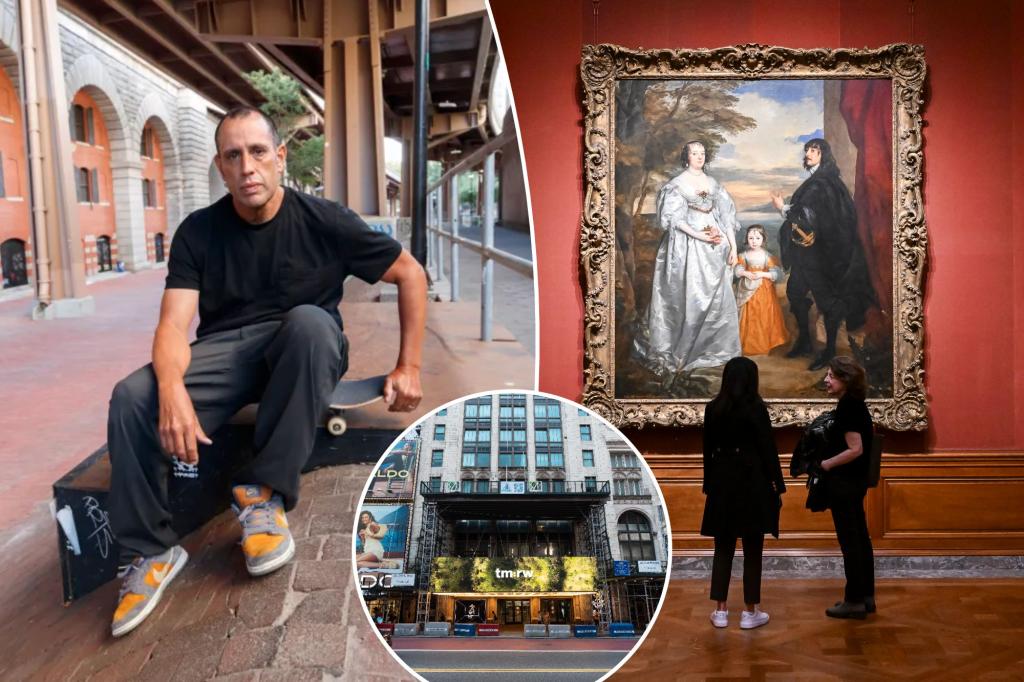New York City’s Architectural Renaissance: Old Spaces Finding New Life
In a city known for its relentless evolution, New York is experiencing a remarkable transformation—one that honors its past while boldly stepping into the future. The metropolis has always been defined by change, but 2025 is bringing something special: beloved institutions are being reimagined rather than replaced. This wave of preservation-driven progress has captivated even the most cynical New Yorkers, proving that honoring history doesn’t mean standing still. As Moses Gates, author of “Hidden Cities” and vice president of the Regional Plan Association, observes, “We’re continually growing and changing, but we also preserve a lot of what makes this city architecturally distinct and unique, from different periods over literally hundreds of years.” This thoughtful approach to urban development has resulted in five particularly noteworthy revivals that deserve celebration—historic landmarks that have found new relevance without sacrificing their soul.
The Brooklyn Bridge’s Manhattan underside, affectionately known as “The Arches,” represents a grassroots success story decades in the making. Since the 1970s, this neglected space beneath the iconic bridge has been a sanctuary for skateboarders who transformed the forgotten urban landscape into their personal playground. Famous enough to be featured in Tony Hawk’s video game around 2000, the area (nicknamed Brooklyn Banks) closed indefinitely in 2010 due to bridge construction. Now, it’s experiencing a renaissance as part of the in-progress Gotham Park, a nine-acre development that preserves and enhances the site’s skating heritage. Steve Rodriguez, a longtime Brooklyn Banks skater who helped spearhead preservation efforts, describes the transformation: “The renovation unlocked a lot of different parts of the space that you can skateboard on and hang out on. There are these huge arches that were shut forever that you couldn’t access, and those are now open. You’re truly in this space that is magical, majestic and welcoming.” The reopening has become a magnet for skating legends of all ages, with Rodriguez noting that 47-year-old professional Quim Cardona chose to celebrate his birthday at the Banks—a testament to the emotional connection many feel to this unique urban space.
Meanwhile, on Fifth Avenue, the Frick Collection has completed a meticulous $220 million renovation, carefully bringing the Gilded Age mansion into the modern era. This marks the museum’s first major overhaul since officially opening in 1935, and the changes thoughtfully expand the visitor experience while maintaining the elegant character that makes the Frick so beloved. Art enthusiasts can now access the mansion’s previously off-limits second-floor rooms via a magnificent staircase that would feel at home in “Gone With The Wind,” discovering intimate exhibition spaces that complement the expanded ground level and new dining options. Axel Ruger, the Frick’s director, explains that these changes allow the museum to host large-scale special exhibitions that previously couldn’t fit the space: “We could do that in the past, but they always had to take place in the collection galleries—and part of the collection had to go into storage.” This October, the museum will showcase “To the Holy Sepulcher: Treasures from the Terra Sancta Museum,” featuring over 40 rare objects from Jerusalem’s spiritual home of the Christian faith—exactly the kind of expansive exhibition the renovation makes possible.
After closing its doors in 2017, the legendary Waldorf Astoria has finally returned to Park Avenue following an extensive renovation that honors its Art Deco heritage while introducing contemporary amenities. The iconic hotel now features a 20,000-square-foot Guerlain spa, cocktails from downtown mixologist Jeff Bell in the refurbished Peacock Alley bar, and two magnificent new restaurants. Japanese kaiseki spot Yoshoku offers refined Asian cuisine, while Lex Yard presents a deluxe, two-tiered brasserie experience under the direction of Gramercy Tavern’s executive chef Michael Anthony. Even the hotel’s namesake Waldorf salad has been reimagined—Anthony’s version builds on the 1896 original’s foundation of celery, apples, and grapes, but replaces the heavy mayonnaise with a refreshing lemon aioli and adds thoughtful touches like toasted sunflower seeds, grated cheddar, and candied walnuts. True to the hotel’s evolution, the salad itself will continue to change with the seasons. “Rather than create one stroke of genius, I decided that the salad would be seasonal,” Anthony explains, noting that the classic dish will “discreetly change” throughout the year, mirroring the hotel’s balance of tradition and innovation.
The Candler Building on 42nd Street between Seventh and Eighth Avenues has spent most of its century-long existence in a challenging location. Built in the early 1990s by Coca-Cola magnate Asa Griggs Candler, the handsome structure stood on what was once the notorious block known as “The Deuce”—infamous for decades as a hub of pornography and crime. Even after the controversial cleanup of Times Square around the millennium, the building struggled to find its purpose. A McDonald’s occupied its lower floors from 2002 until the pandemic, while the upper levels most recently served as emergency migrant housing. Now, this landmarked building has found new life as tm:rw, a 200,000-square-foot technology emporium. Co-founders Nathalie Bernce and Jacov Nachtailer of Smartech Retail Group have created what they describe as a modern-day World’s Fair, featuring rotating immersive tech experiences ranging from professional-grade racing simulators to soundproof sanctuaries powered by Alexa. Unlike traditional retail spaces, tm:rw focuses on interaction and discovery. “It’s not about rows of products or transactional shopping,” Bernce explains. “It’s about creating an environment where innovation feels human—where you can touch, feel, and experience what’s next.” The space also serves as a living laboratory, where creators can observe how customers engage with their products and refine designs before wider release.
While the iconic Lord & Taylor department store won’t be returning to Fifth Avenue, its magnificent Italian Renaissance building is finding new purpose as a culinary destination. Construction is finishing on Dorothy Shaver Hall, a 35,000-square-foot dining complex named after the former store’s groundbreaking president—celebrated as the first American woman to own a multimillion-dollar business. Rather than filling the space with corporate chains, project director Sean Dillon has curated a collection of beloved local establishments. “You’re not going to find a super corporate brand in the hall… We’ve got an authentic New York spread,” he explains, pointing to the inclusion of Brooklyn’s F&F Pizza, Tompkins Square Bagels, and Taqueria Al Pastor among the eleven inaugural vendors. The hall’s design evokes the elegance of fine dining while maintaining accessibility, featuring innovative concepts like a wine bar with its own cheese conveyor belt—imagine all-you-can-eat sushi, but for artisanal cheeses. Additionally, Michelin-starred chef B.K. Park of Chicago’s Mako is opening a new omakase restaurant in the space, promising a unique fusion of traditional Japanese techniques with Western influences. This thoughtful repurposing demonstrates how even when beloved institutions like Lord & Taylor must evolve, their architectural legacy can continue to serve and delight New Yorkers in new ways.















